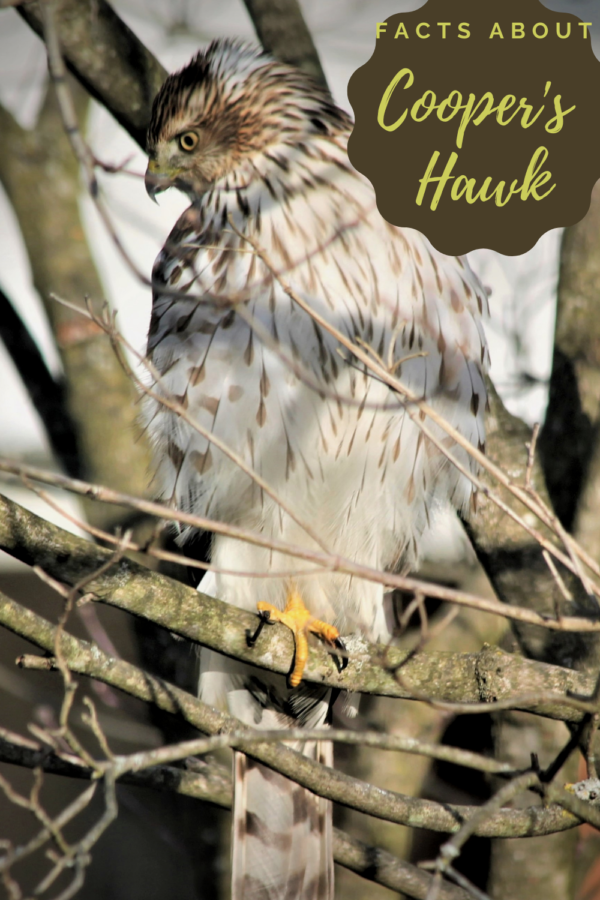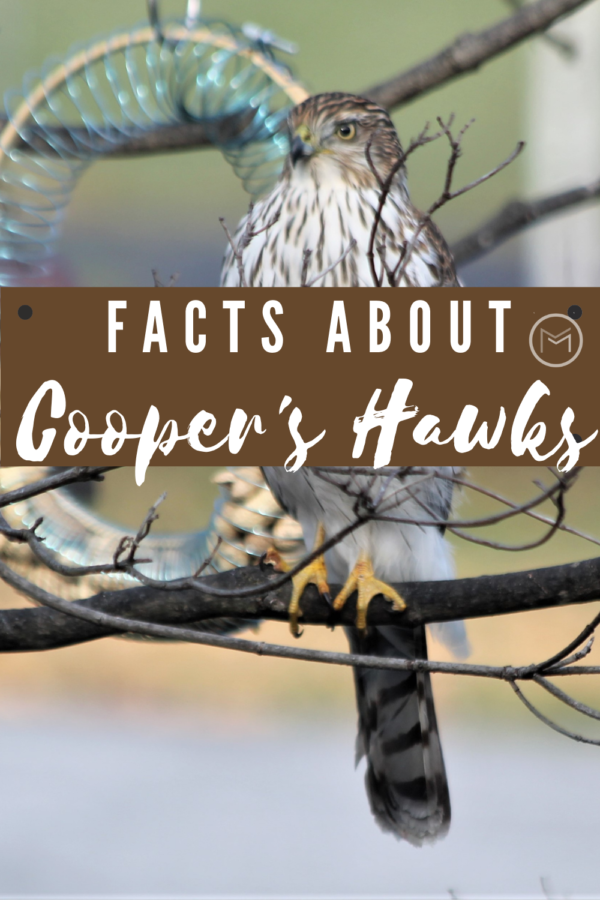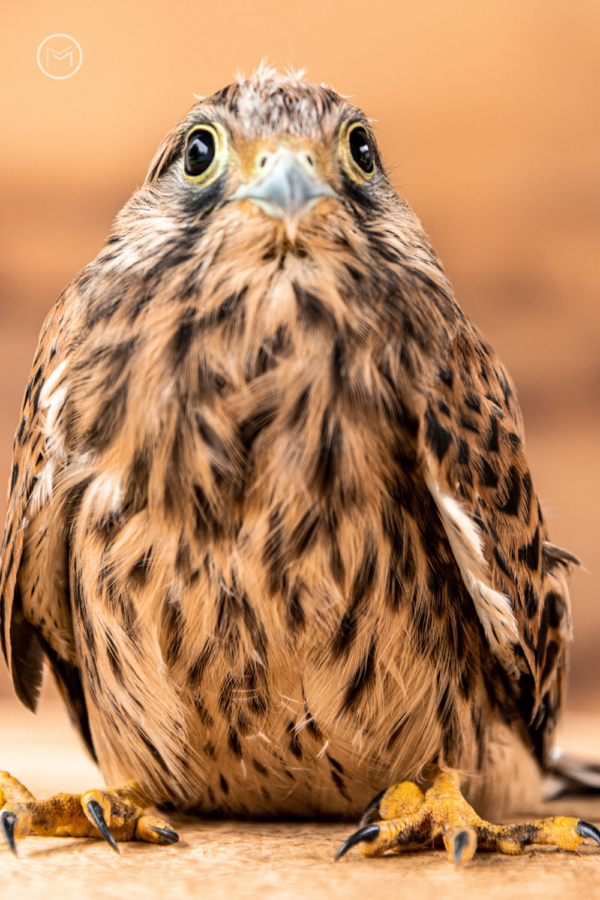Today, I’m sharing backyard bird tips on facts about Cooper’s Hawks. I have had a immature Cooper’s Hawk visit for the past 2 years. They are such fascinating creatures to watch, and the juveniles are so beautiful. But, I must say I was startled when I first one. My reaction was, what in the hell is that. I was used to small beautiful songs and the largest birds being the Blue Jay and Robin. I observed it for a few minutes and noticed its curved bill, and that was the giveaway that my visitor was a hawk. But, what kind of hawk I wondered. After researching, I found out that it was a Cooper’s Hawk.
Cooper’s Hawk adults have a slate gray or brown gray back. Their tails have several black bands with a white band. Furthermore, they have a yellow spot on their bill and dark red eyes. The female is larger than the male. Interestingly, juveniles have brown backs, brown streaks on the chest and bright yellow eyes. Lets learn more!
Facts about Cooper’s Hawks:
- The Cooper’s Hawk was known as the “chicken hawk.”
- The Cooper’s Hawk is plentiful in North America. It is actually a bird-eating raptor.
- Cooper’s Hawks usually mate for life.
- Males feed the female up to a month before she begins laying eggs.
- The male usually chooses the building site for the nest.

- The female builds the nest in either pines, oaks, Douglas-firs, beeches, spruces, and other deciduous or coniferous tree. The nest are usually built 25 – 50′ above the ground.
- Cooper’s Hawks like to build their nest on pre-existing bird’s nest or a squirrel’s nest.
- Cooper’s Hawks return to the same nesting area; however, they build a new nest each year.
- Female Cooper’s Hawk lays between 3 – 5 pale bluish-white eggs per breeding season. They lay an egg every other day, and raise one brood per year.


- Females incubate the eggs for about 35-36 days.
- The male brings food to the female and incubates the eggs while she eats.
- The female feeds her brood for the first two weeks after the eggs hatch. Males will bring food, but they do not feed the nestlings. The female takes the food from the male and feeds her brood.
- The nestlings will leave the nest 28 to 32 days after hatching, but will return to the nest for some time after leaving. They will become independent within a few months.
I hope you enjoyed my facts about Cooper’s Hawks. Most importantly, I hope that you will be lucky, and have a juvenile visit you too. You may also like Cooper’s Hawk birds.






Thanks for this informative post, Rhonda! I have certainly enjoyed your facts about Cooper’s Hawks!
Hi Veronica. I’m glad you enjoyed my post on the Cooper’s Hawk. It’s rare to see one up close and personal, I’m glad they stop by. Nice seeing you again.